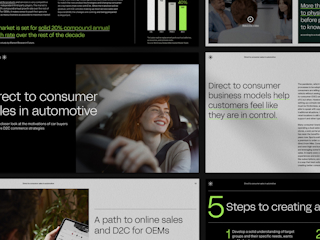2021-01-25
During my time as a designer and Creative Director, one of the questions I have often been asked is why I believe the visual aesthetic of a digital experience is as important as the other components of that experience such as the underlying UX (driven of course by user needs) or the technology used.
For me these things each play equal roles and it’s their combination that creates the magic.
Visual design aesthetics in the context of digital experience design are composed of many smaller parts that include:
- Colour
- Typography
- Imagery
- Layout
- Lines and shapes
- Space
- Depth
- Movement
- Accessibility considerations
It’s the interplay of these ‘atomic’ parts that creates the visual design aesthetic and is key in representing a brand.
As a designer, I am biased towards all things visual.
This doesn’t alter my belief that the aesthetic of almost any object, product or experience is as important as the other parts that make up that thing. Whether that is a physical product like a chair, something large like a building, or as with what we’re focusing on here, a digital experience. As with almost all of the greatest of things ever designed it is not only how they functioned that made them exceptional but how they looked - their visual design - that often played a key role in its success.
A great example of this is the original Apple iMac G3, launched in 1998. Consider pre 1998… a time where computers where bland beige/grey boxes. Functional? Yes (for the time). Pleasing on the eye? No. For most, the idea that something like a computer would benefit from great visual design would have been derided.
However, the impact of the G3’s spectacular piece of design was phenomenal and changed forever our view of the importance of visual design in relation to technology products. When Apple launched the G3, not even their breaking away from previous standards such as the floppy disc in favour of USB stopped consumers going crazy for this new design. A product that people could bring into their homes almost as a piece of art, a product that oozed cool and modernity and that allowed consumers to also revel in being associated with such a product. The impact of the G3’s visual design connected with consumers on an emotional and visceral level and in the process cemented Apple as the design-led, consumer experience focussed brand we know today.

An example closer to home is easyJet.
We conceived, designed and built a new Award Winning customer engagement tool for them called Inspire me. Aimed at what we call Generation easyJet consumers, the tool was designed to inspire travellers when the data told us they needed some help deciding where to travel.
Through user testing we found that it was the visual aesthetics of the tool that really wowed our consumers and has been key in driving engagement. The use of user generated photos and the layout of the photography immersed consumers into the destinations they were exploring and gave them the feeling of being a virtual tourist, connecting with them on an emotional level. The strength of this connection led to a significant increase into the flight booking grid upon launch.

Value of visual design
Today, even though visual design is more appreciated, it can still be hard to convince those who assume that the aesthetics of a digital experience are superfluous to its other parts. If I had £1 for every time I’ve heard phrases such as ‘colouring in’ I would be rich. However, the visual design will have a significant impact on the success of your digital product or experience.
According to recent studies, it takes about 50 milliseconds (0.05 seconds) for people to form an opinion about your website.
Evolution has wired humans up in a way that means we make almost instant judgements on what we see, which means people who visit your website or app are making almost instant judgements on what’s in front of them. And while the experience the customer has will then be vital in influencing their decision whether to return or not, it is the visual design of an experience that seeds their first opinion and provides that first emotional connection.
So while the UX reduces friction the visual design is key in eliciting emotion. Doing both of these should always be the goal of any great digital experience.
Great visual design is obviously also essential for brands.
Today we live in a time where consumers expect an omni channel experience and with that it is important that the brand experience is consistent across those different channels and is of a consistent quality.
A recent study by Lucidpress revealed that customers appreciate it when a business has a consistent brand. In fact, consistent presentation of a brand has seen to increase revenue by 33 percent (Lucidpress,2019).
Consistency though can be hard to reach, particularly if you have many legacy sites or perhaps have not established a mature and efficient way of delivering digital products using tools like design systems. But with consistency not only comes trust but also clarity and the ability to better communicate. As Milton Glazser put it:
“To design is to communicate clearly by whatever means you can control or master.”
So yes, visual design is a vital component of any digital experience. This means having visual designers as part of a delivery team, it means integrating design processes into your wider ways of working, it means building tools like design systems, considering brand, validating design with user testing and it requires senior stakeholders to understand the role visual design plays. Visual design is the part of the experience design puzzle that connects to your customer’s subconscious, builds trust with your brand, helps to make strong emotional ties and ultimately plays a core part in success.
If you'd like to discuss the power of visual design on improving the impact of your brand, get in touch. lydia.livingston@valtech.com






